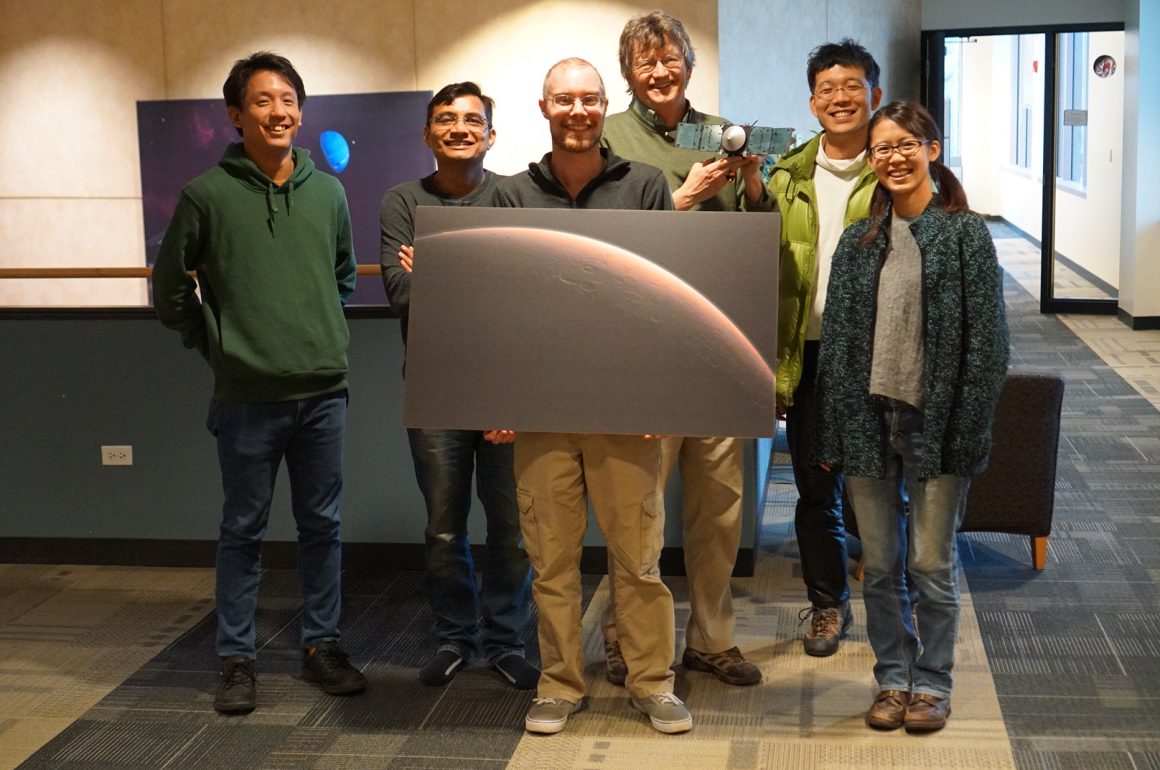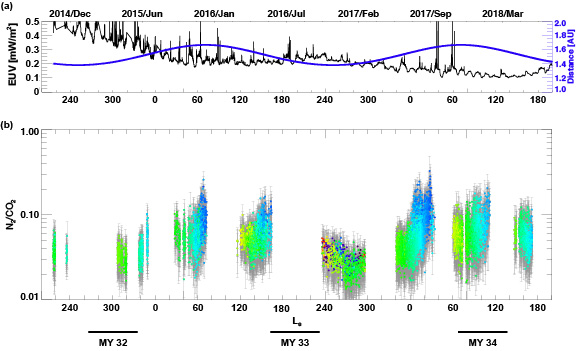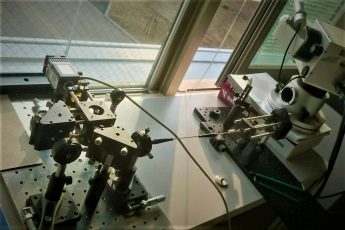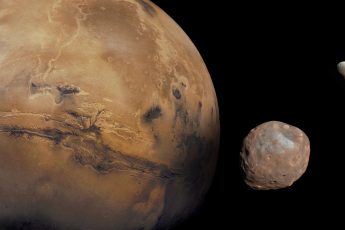Variations of upper atmosphere on Mars by MAVEN and TGO

The upper atmosphere of Mars is the region of the thermosphere and ionosphere at an altitude above 80 km. Although the density of the atmosphere is very low compared to the surface, the atmospheric condition can vary significantly due to external forces coming from space, such as solar extreme ultraviolet radiation, solar wind, and high-energy particles from the sun, which can heat the atmosphere and ionize atoms and molecules. On the other hand, recent observations have revealed that fluctuations in the lower atmosphere, such as global dust storms and the dramatic expansion and contraction of the lower atmosphere, can also have an impact on the upper atmosphere on Mars, in addition to the effects from above. In particular, compositional changes in the upper atmosphere are expected to be affected by both the lower atmosphere and space. We focus on the effects of the lower atmosphere on the upper atmosphere and investigate the variation of the composition of the upper atmosphere using space-born observations.
NASA’s Mars Atmosphere and Volatile EvolutioN (MAVEN) spacecraft is equipped with several instruments that can measure the composition of the upper atmosphere. We investigated the time variations in the number density of CO2 and N2, according to factors such as season, direction of latitude, and local time. The drastic increase and decrease of the composition of the upper atmosphere was observed as the lower atmosphere changed (figure below, b).
It is, however, not possible to fully understand the mechanism and behavior of the lower atmosphere and its upward propagation to the upper atmosphere by only observing the upper atmosphere. Fortunately, Mars is currently being observed by several satellites, and there is a European satellite called Trace Gas Orbiter (TGO), which is designed to observe the lower and middle atmosphere. In collaboration with the Belgian research institute that develops and operates the equipment onboard TGO, we plan to analyze the structure of the atmosphere and the distribution of each molecular species in the lower and upper atmosphere observed by TGO and compare it with the results obtained by MAVEN.
(Doctoral course 1st year Dr. Yoshida)
Fig. Time variations of (a) solar extreme ultraviolet intensity (black), Mars-Sun distance (blue), and (b) atmospheric N2/CO2 at an altitude of 140 km on Mars. The color denotes local-time on Mars.






